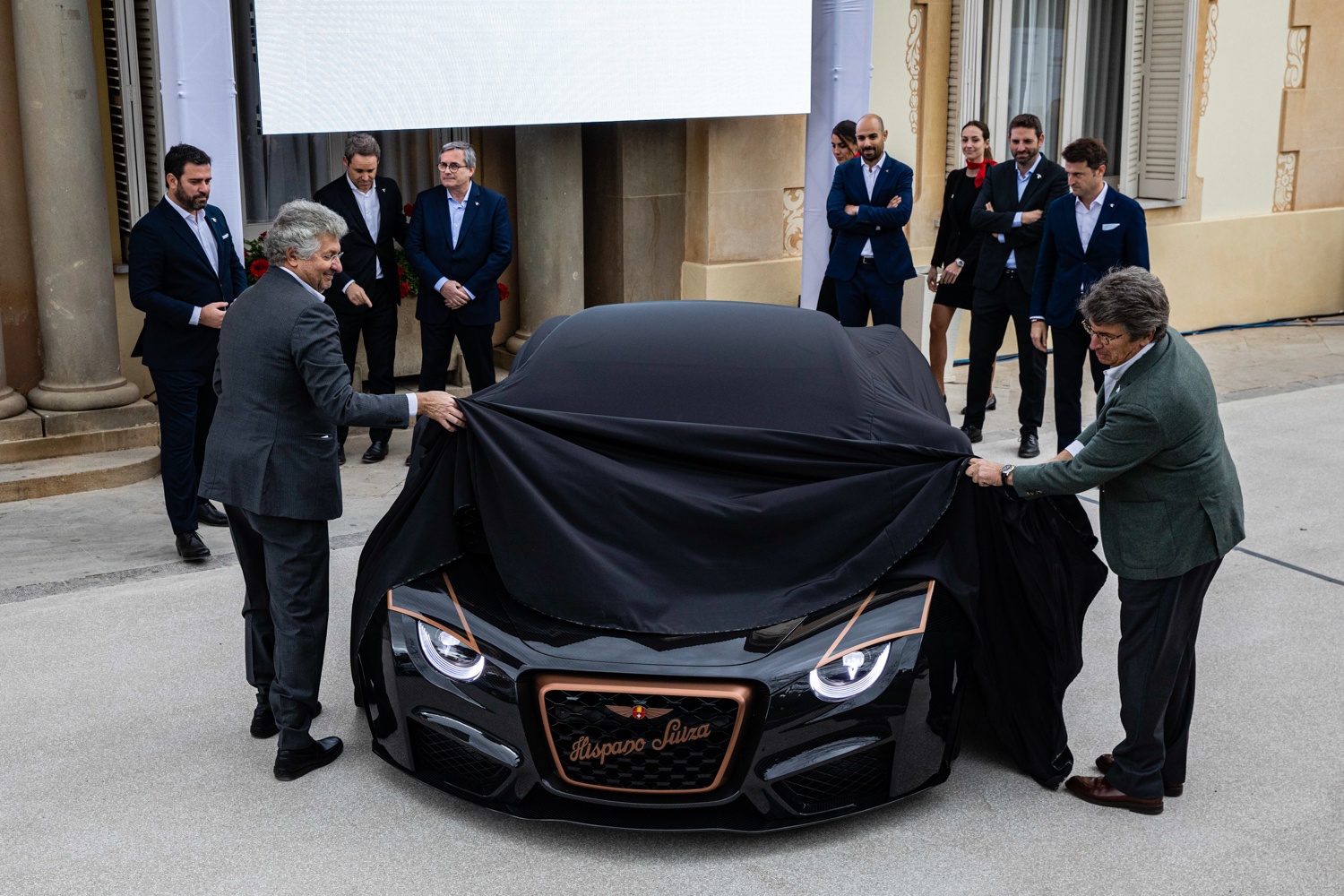The Hispano Suiza name isn't a new name, it built electric car prototypes as far back as 1899 and was winning races in the 1920s. It is now part of a conglomerate called Grup Peralada that owns numerous hotels, golf courses, casinos and restaurants. The rebirth of the brand began with the Carmen, and now there is a new version of it called the Carmen Boulongue, which will be made in even more limited numbers.
It is built using a carbon fibre monocoque chassis that weighs 195kg and claims a torsional rigidity of 50,000Nm/deg, making it very stiff. Switching to a carbon fibre body shaved 60kg off the overall weight, which is now 1,630kg, and the company claims that the Carmen Boulogne is one of the most carbon fibre intensive cars in existence.
It is powered by a T-shaped 80kWh lithium-ion battery that runs between and behind the seats, and also serves as a tuned mass damper to help reduce structural vibration on the move. Hispano Suiza says that with a full charge it is capable of travelling up to 400 kilometres on a single charge. It can also charge at 80Kw with the option of a CCS Type 2, Chademo and GB/T charging.
Tuning of the electric powertrain increases the output by 95hp to a total of 1,114hp, with the company claiming some serious performance figures. Its 0-100km/h sprint is said to take less than 2.6 seconds and the top speed is 290km/h. The dual electric motors produce a total of 1,600Nm of torque, driving the rear wheels. The company is partnering with QEV Technologies for production, a company that already has experience in Formula E and the FIA Electric Production Car Series.
Part of the unique look of the Carmen was its enclosed rear wheels, but with the Carmen Boulogne, they are exposed allowing unobstructed views of the 20-inch rear wheels. Helping to scrub off speed is an accompaniment of carbon ceramic brakes from AP Racing with six-piston callipers.
The unusual shape of the Carmen Boulogne is said to give it a very low drag coefficient making it more aerodynamic. Circular rear lights are hollowed out and carry the brand's stork emblem at their centre. The all-black gloss carbon fibre bodywork is detailed with a distinctive Orange Tulipwood colour and this carries through to the interior where it contrasts with swathes of Alcantara and leather that attempts to distract from the cheap looking switchgear that has been raided from a parts bin. Like almost every other multi-million euro hypercar these days the cabin is adorned with digital displays and there is also the obligatory Swiss clockface in the centre of the dashboard.
The first cars are due to be delivered in 2022.
The company is planning to produce five of the special edition Boulogne versions in addition to the planned 14 examples of the regular Carmen. Initial customer deliveries are due to start in 2022, and according to the company, there are some order slots available. Pricing for this carbon-fibre bodied version will start at €1.65 million plus taxes.
























